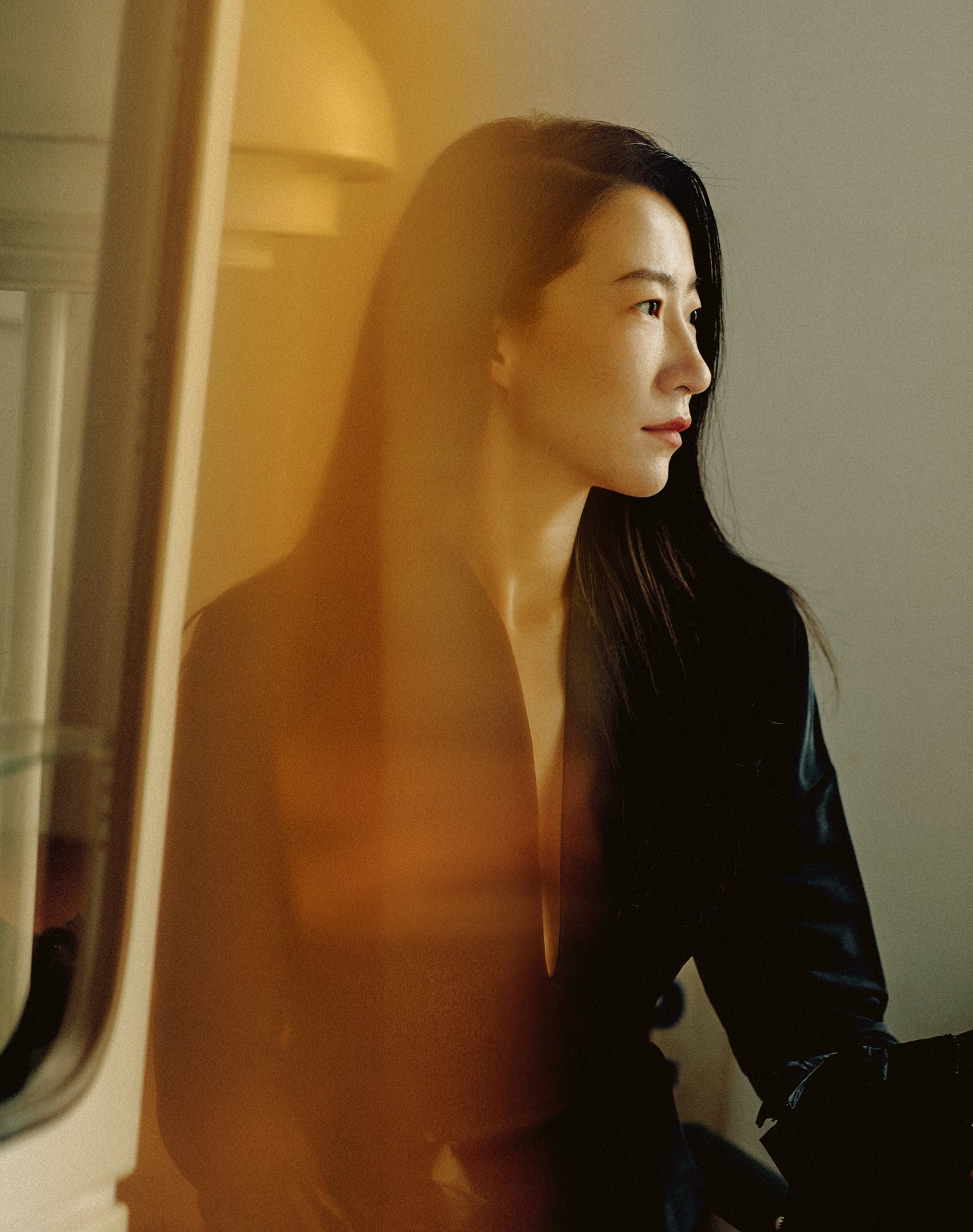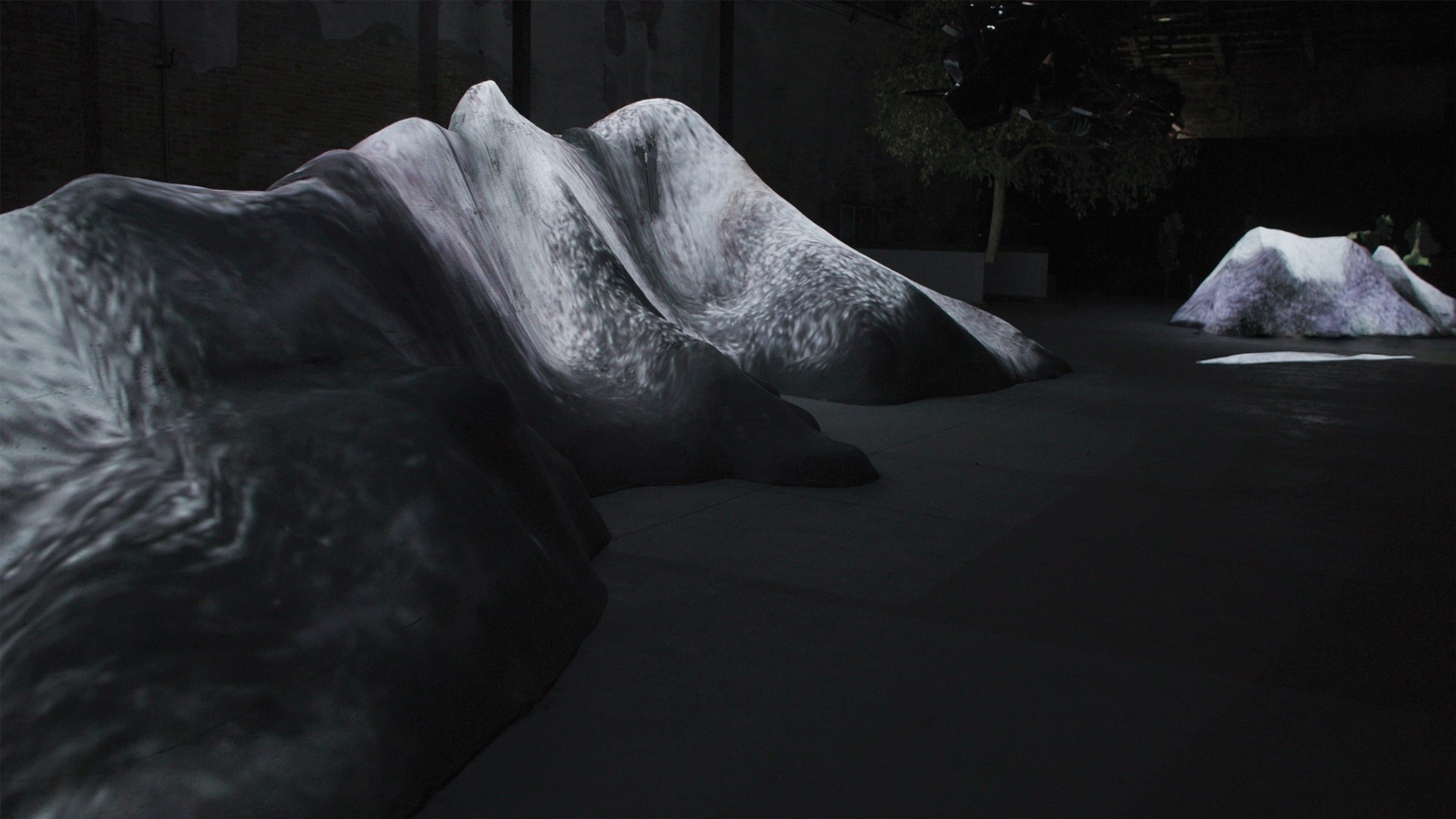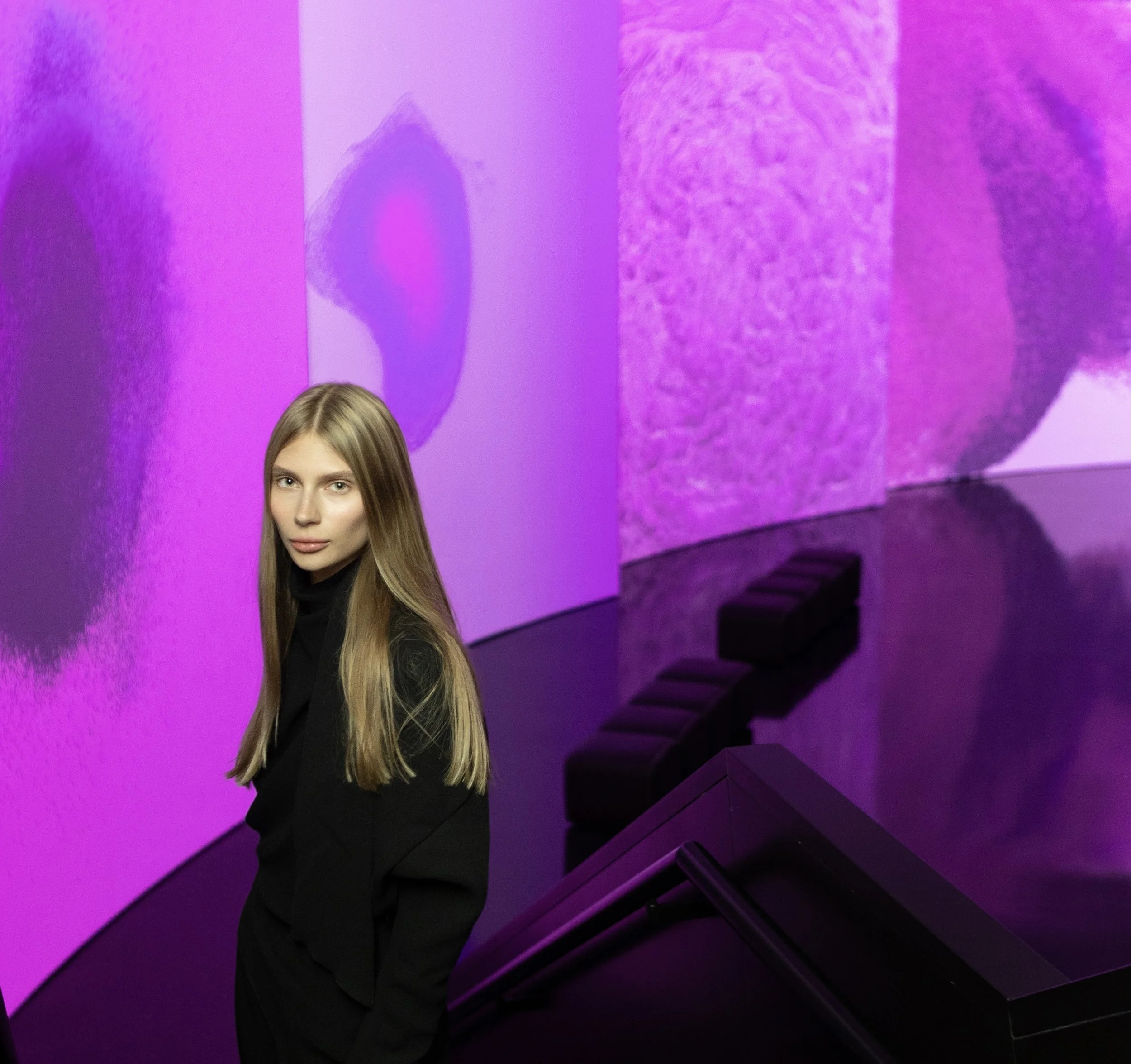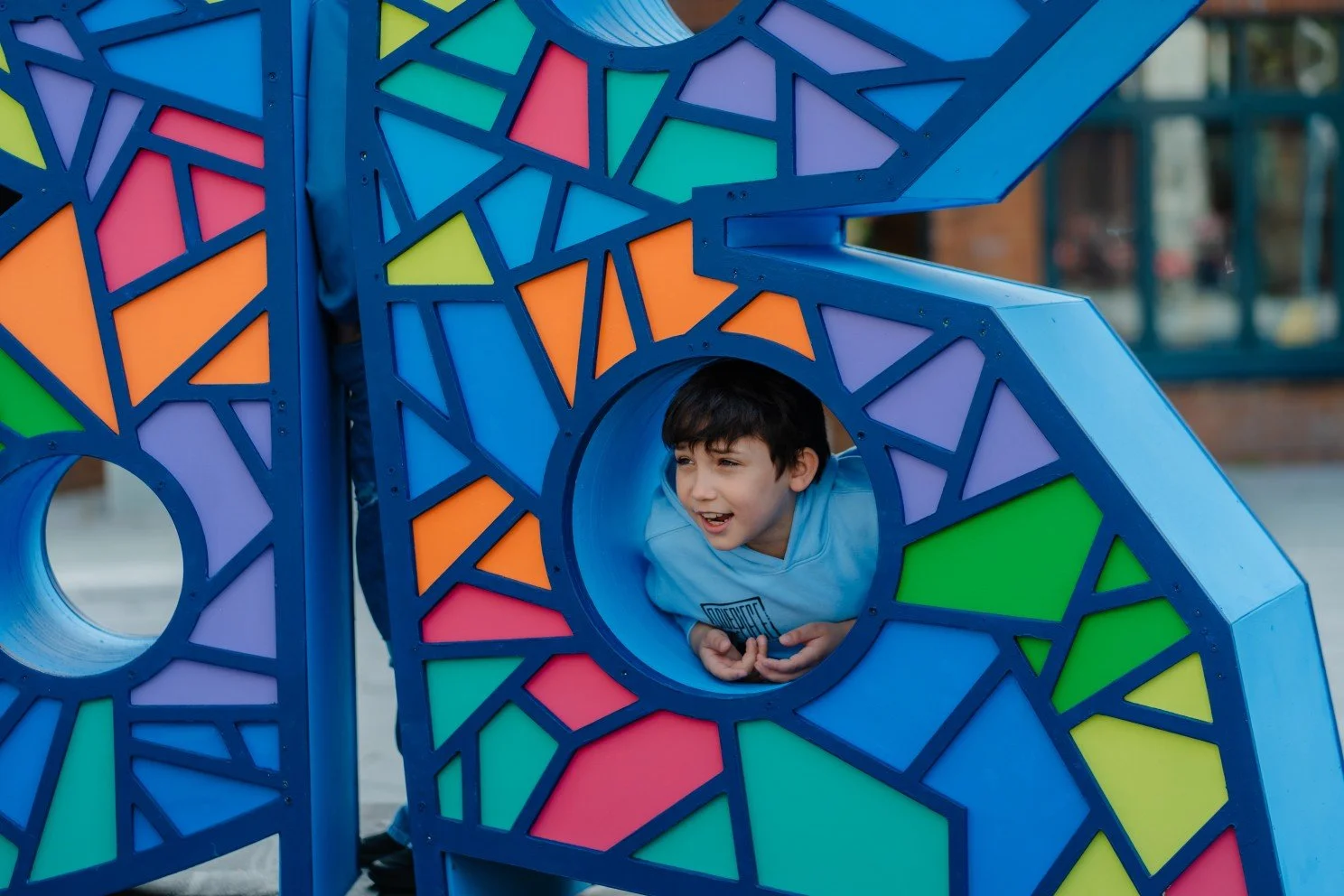INTERVIEW | Jiayu Liu
10 Questions with Jiayu Liu
Known for her immersive and evocative media installations, Jiayu Liu is a media artist based in Beijing. She holds an MA from the Royal College of Art.
Jiayu's artwork often recreates and augments the natural world and focuses on relationships between humans, nature, and the lived environment, exploring human behavior and response. Under the constantly updated technology, using different media, material, and digital technologies, her installations become immersive portals through which one can be transported between the superimposition of real and virtual, physical and digital, and material and immaterial worlds. Using live and static streams of data and digital technologies, her installations enable new communication nodes with audiences. The audience's behavioral response and emotional resonance are aroused through spatial collage and displacement, making her creation repeatedly "re-created" by audiences.
Jiayu Liu - Portrait
She has exhibited internationally in museums and festivals, including the V&A in London, K11 Art Space in Hong Kong, He Xiangning Museum, and Guan Shanyue Museum in Shenzhen, CAFA Museum, Times Museum, Today Art Museum and Riverside Museum in Beijing, Power Long Museum and OCAT in Shanghai, The 59th Venice Biennale, London Design Festival, Kinetica Art Fair London, London Fashion Week, Chengdu Biennial, Beijing Media Art Biennial, and Guangzhou Triennial.
She also has collaborated with many world-known brands and some art commission projects for public spaces.
INTERVIEW
Please, introduce yourself to our readers. Despite your young age, you have already exhibited internationally at some of the most prominent art events in the world and collaborated with top brands. What is your history, and your artistic background?
My undergraduate major is Visual communication. After graduating from university, I saw a major called information experience design when applying for an RCA MA degree. After seeing the description, I'm very into this subject as I did some installation and projection practice in college. In this way, I started the creation, study, and practice of new media art.
I practiced Chinese calligraphy and Guzheng when I was three or four. Although these two hobbies were essential at my younger age, they have not become my subject. However, you could find some visual poetic commonalities through my creations over the decades.
You studied in the UK, and you are currently based between Beijing and London. How do these two cities influence your work?
I have been studying in London since 2012; After graduating in 2014, I have been working, studying, and living between Beijing and London until the COVID-19 pandemic; at that time, I also needed to teach new media art practice courses at different universities in China, so I often stayed in Beijing for two or three months and then stayed in London for another two or three months.
I feel that these two different countries bring me many differences in life, which would also have a great impact on my life or my creation. For example, every time I come back to Beijing, there will be many exhibitions, forums, and teaching, which leads to a very busy state of mind. But when I return to London, I can concentrate and create a calmer statement. These are two different states.
Also, apart from art creation, I spend a lot of time watching exhibitions in London. There are a lot of art galleries in London. New media art has become the forefront in Europe. People could visit different new media art exhibitions in Europe and watch a lot of wonderful contemporary art. After I graduated, this has been a good way for me to acquire and absorb knowledge.
So, for me, these two cities give me completely different conditions that complement each other. The artworks created in London or the knowledge learned could be quickly applied to my further exhibitions. Or, I might transform some of the knowledge I have learned and the artworks I have seen into my teaching materials. From my point of view, they are complementary and indispensable.
Streaming Stillness, installation, 2022 | China Pavilion, 59th Venice Biennale - 2022 © Jiayu Liu
Streaming Stillness, installation, 2022 | China Pavilion, 59th Venice Biennale - 2022 © Jiayu Liu
Your work is currently on display at the 59th Venice Biennale, for the Chinese Pavilion. Tell us more about this experience; what was it like to be selected for the Biennale? And how did you prepare for such an important event?
Very exciting. But I think it comes with the tension and pressure to work harder. The Venice Biennale is one of the most important art exhibitions in the world. The national pavilions of each country will also select artworks of representative artists. You can always find a lot of works by outstanding artists from different countries. For artistic creation, especially new media, art is in a period of constantly practicing more possibilities. This is why I think it is also a part of the source of pressure.
We have made a lot of preparations for this exhibition. In particular, two emergency things happened. The first one is that the Venice Biennale was delayed from 2021 to 2022 because of COVID-19. Also, most Chinese artists needed help to go to Venice to set up the exhibition. We had to finish this exhibition through online cameras, as well as remote team arrangement and debugging. All the equipment we used for the exhibition was shipped from China to Venice. To ensure this online debugging, especially for such a large 3D projection work, we did a lot of different preparations and tests in China before the exhibition started. This is the reason that all of our equipment was shipped. The 1/2 version of our work is completely tested in China before it is loaded on the train and shipped to Venice.
Meanwhile, we experienced a long preparation period which started at the end of 2019. In China, the curatorial proposals for each edition of the Venice Biennale are relatively complicated. There will be curators applying for the exhibition with their proposals in the audition. After being selected, they were asked to explain their proposals individually. After another round of selection, the judges selected the final curatorial proposal, curator, and artist for this edition of the Venice Biennale. Coupled with the fact that the epidemic has been extended for another year, which leads to a very long period. After it was all set up, the delivery deadline was less than two months. For this reason, Although it seems to be a long preparation period, it takes less than two months to carry out the preparatory test according to the venue in Venice.
How did you enjoy working in a historical place like Venice? What did the city inspire you to achieve?
I like to do this artwork in a historic city; it has a very historical architectural structure and skin. In a way, it completes the work. Because the visualization and expression of this work are artificial intelligence tech and generated dynamic graphics, when we put this new media art installation in a historical architectural space, the architectural field is also conducting a dialogue between tradition and contemporary with this work.
Streaming Stillness, installation, 2022 | China Pavilion, 59th Venice Biennale - 2022 © Jiayu Liu
Let's talk about your work, Streaming Stillness, that you presented for the Venice Biennale. What is the main idea behind the work? And what messages did you want to convey?
Referring to the concept of YuGong, the earliest geological imagination, and thinking in China reshapes the terrain of China through AI-drawn maps, aiming to create a new geological origin for the Chinese civilization in the new era.
This work was obtained in two steps: Firstly, two-layered deep machine learning and AI technology were used to formulate several sets of virtual, dynamic 3D graphs based on plenty of China's terrain data. Next, 10,000 Chinese ink-and-wash paintings were learned and trained on the surface of the virtual domain through AI technology.
The audience could find a sense of uncertainty, but it seems like existing in reality. The domain swarming with uncertainties yet appearing sensually real is generated by virtual means. It comes from the real world yet doesn't exist in it. Instead, it's a natural prototype existing beyond human experience and reaches transcendence. In this work, virtuality is no longer aimless but shakes reality for its approximation to reality. Thus it provides possibilities for revealing the invisible reality. Or it can be called knowing the reality yet sticking to its virtuality.
What was your creative process like for this work? Did you develop the project specifically for the Biennale, or did you adapt an existing project?
This artwork was not created after the exhibition. As we mentioned before, the Biennale was delayed. Also, the curatorial proposal has a long period of process. This work was created at the end of 2019. The reason for creating it is we completed our first works, "By the Valley" and "By the Window," by artificial intelligence and deep machine learning in the second half of 2018. At that time, we let the models study the sky, and I mainly wanted to express what kind of state the human sky is in the view of artificial intelligence in the current era of technology.
At that time, 6,400 photos were uploaded to the model of the machine learning, calculating, and generating. It was a work based on the application of technology with two-dimensional space. Therefore, after Tracing The Sky in 2019, I want to explore further and discuss more the richness, completeness, and possibilities of artificial intelligence technology in my artistic creation.
Also, the previous works were still two-dimensional presentations. How could AI be used to complete a three-dimensional work? Based on this kind of technical discussion, we begin the project of Streaming Stillness. It is a further possibility in three-dimensional shaping and generating results.
Streaming Stillness BTS from Jiayu Liu Studio on Vimeo.
You define your works as "immersive portals through which one can be transported in between the superimposition of real and virtual, physical and digital, material and immaterial worlds." How did you apply this concept to the Streaming Stillness installation?
By doing this artwork, we want to express emotion and state. Just like the oriental art language or culture defined by everyone, it will be expressed and displayed in narrative and poetry. Therefore, I hope to dialogue with the space of historical buildings and lead our audience to feel this unique emotion and state.
After the wave of the metaverse, many creators began to create art in the metaverse, or artworks to present cutting-edge technologies while imagining the unknown and the future. Meanwhile, new media art has a feature that exists in a real and physical way, allowing everyone to feel and interact with it. From this perspective, the installation seems like a port for us to connect the real world and the virtual world.
In the past, we often said that the space where the installation is located is a surreal space or surrealism. Now, I may have a better understanding of this surreal space. It may be a real space that we can interact with, perceive, feel, and understand it. But some of the data it uses, especially artificial intelligence or artificial intelligence technology, is used by everyone to generate calculation results that are both unknown and known. It will make people wander between physical and virtual, real and the unknown. So I think the field presented by the new media installation is a space with many layers. When the audience steps into this space, they can feel something richer, more layered, and full of imagination.
In your work, you use the latest technologies and mix different mediums. How important are new technologies for your work? And how do you keep up to date with the latest trends and innovations?
Looking back on all our creations over the past ten years, technology is important as every piece of work contains a bit of technical application as a medium. But new technology is not the subject of my work. Because in my creation, the narrative of artistic language and artwork concept is more important. When I conceive a project, I'll put the technology at a later stage and start with the concept first. Then put the technology we have learned into its appropriate part.
I think technology is a creative language. In new media art, technology does not exist independently. It's not like we take an idea and apply the latest technology. It is necessary to start from the art concept, then the presentation, or choose the appropriate technology as the medium or material when processing the work. It is essential to use technology as a medium to apply and create in the most appropriate place. Therefore, it is very important to study the technologies. Then, you can naturally put technology into your work at the most appropriate time.
Also, pay attention to art media and artists and visit many artists' works. Many creators tend to pay attention to famous artists while doing research or references, but I would not only study famous artists but also collect information on different social platforms. At the same time, I will also look at the works of many students. Everyone is equal in artistic creation, some artists are famous, and some of whom are still developing. So, every artwork is worthful as different works show the possibility of different technologies. I will also find some possibilities and inspiration from the works of artists or creators.
Streaming Stillness, installation, 2022 | China Pavilion, 59th Venice Biennale - 2022 © Jiayu Liu
Streaming Stillness, installation, 2022 | China Pavilion, 59th Venice Biennale - 2022 © Jiayu Liu
Talking about Venice, how was the work received so far? We visited the Pavilion during the VIP opening and heard many ecstatic comments. What feedback did you get from the public and fellow participating artists?
Due to COVID-19, we couldn't go to Venice this time to experience this exciting moment with people. Instead, we look at photos and videos remotely. However, we have seen many foreign media reports on this work. As I know, Designboom independently featured our work. I have also heard a lot of comments and feedback in China.
From my point of view, the presentation of this work has good news, but there is also a side that needs to be improved and supplemented. First of all, we completed the debugging of the remote three-dimensional projection of the entire work so that it could be presented smoothly. This could be a great challenge.
Secondly, due to the time of customs clearance, the works of participating artists were later than expected, which shortened the entire exhibition and testing time. Also, we're not familiar with the venue. Although we have already simulated the venue and sculptures in the software, after putting the works in this space, I feel there are still many areas that can be improved.
In summary, I feel quite happy. After going through different difficulties, the whole exhibition was presented entirety. Because there are few artists and artworks, it is a rare opportunity to present four works in such a large space, but also a challenging presentation. But the exhibition of the China Pavilion is also a new attempt at presentation.
Lastly, where will we see you next? Any plans for the future you would like to share with our readers?
It could be London, Beijing, or other countries or cities. Where I live is not a major factor in my planning for the future. Especially nowadays, technologies such as social platforms, media, and instant sharing are increasingly global. In further creations, besides the real-time rendering of the universe that I was concerned about, I might focus more on climate change.
In recent years, many art museums and curators have also appealed to the public, calling on more artists and creators to pay attention to such a direction and field-global warming brought about by the climate crisis, melting glaciers, and so on. I remember Eliasson's "Ice Clock" at the Tate Modern. He shipped a lot of ice from Greenland, and people could interact naturally with it. Such a memorable piece of ice melting over time. So, we will pay more attention to this direction in the future.





















